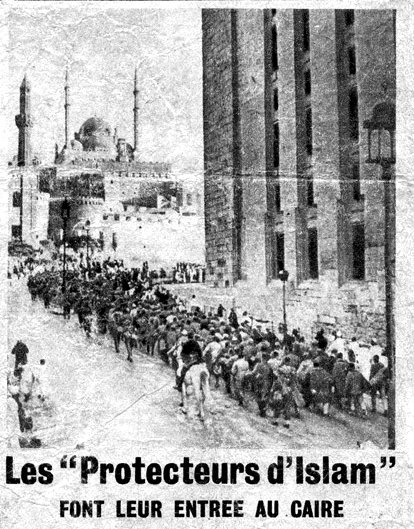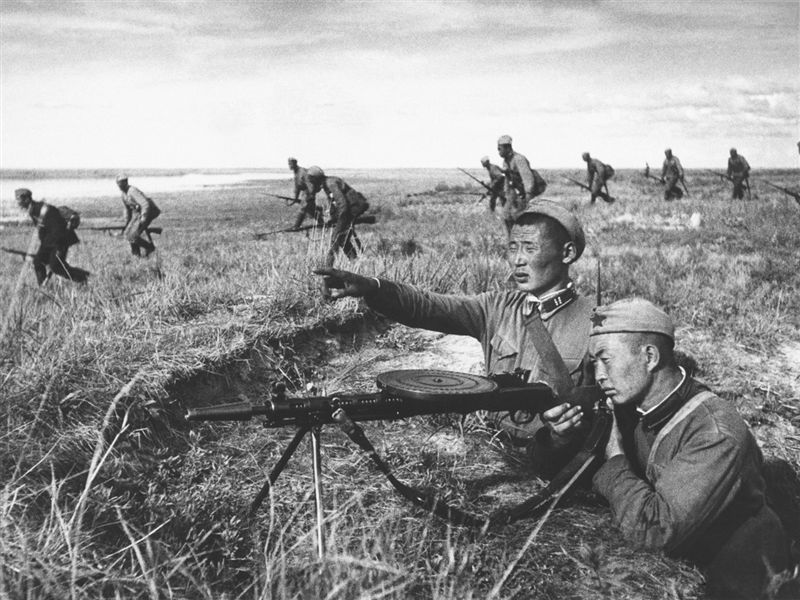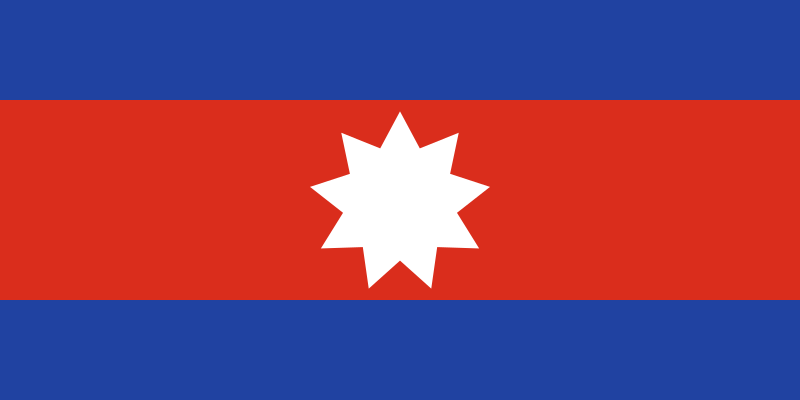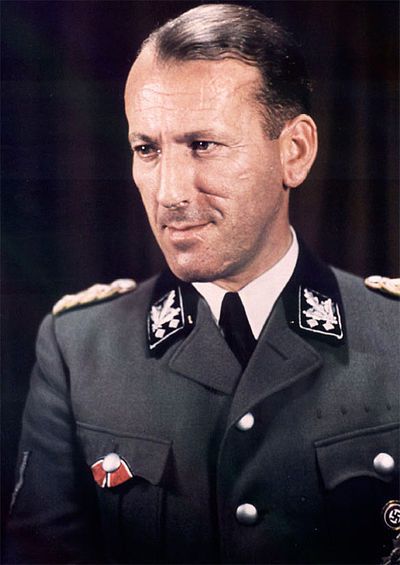Chapter 801: Teutonic Order Division Number Four: Terra Mariana (Medieval Latin for "Land of Mary")

The division was formed in 1939 out of part of the former Ordnungspolizei or Orpo (uniformed national police). While all German police organizations were controlled by Reichsführer-SS Heinrich Himmler in his capacity as Chief of German Police in the Interior Ministry, after the 1938 military Coup against the Nazi's they had not at this time considered to be part of the SS, nor was the Polizei Division on par with the other Waffen-SS divisions. Therefore this Teutonic Order Division under the Generalleutnant der Polizei (Major-General) Eduard Strauch, Karl Pfeffer-Wildenbruch and Arthur Mülverstadt was mostly made up by members of the German Police. This status was reflected in the quality of the equipment they were issued and their retention of police insignia and rank structure. The division was transferred to the Teutonic Order in 1940 and was upgraded to a Panzergrenadier division and tasked with training the Baltic Landwehr or Baltische Landeswehr ("Baltic Territorial Army") as well as the Baltic Police forces of the new United Baltic Duchy. The division itself was formed when thousands of members of the Ordnungspolizei were drafted and placed together with artillery and signals units transferred from the army. These men were never enrolled in the SS and remained policemen, retaining their Orpo rank structure and insignia. They did not have to meet the racial requirements imposed for the SS. The Germans purpose in forming the division was twofold: in a period of heated bureaucratic infighting and competition for manpower, it permitted them to get around the recruitment caps the Wehrmacht had, but it also provided a means for his policemen to satisfy their military obligation and avoid army conscription. The first commander was Generalleutnant der Polizei (Major-General) Karl Pfeffer-Wildenbruch, a career police commander who had been a general staff officer during the First Great War; simultaneous with his appointment he was also commissioned as an SS-Gruppenführer. The division was equipped largely with outdated Polish and Baltic materiel and underwent military training in the Baltic Forest combined with periods on internal security duties in the Baltic Duchy. The division, at this time an infantry formation with horse-drawn transport, was held in reserve during the Finnish-Soviet War, were it was heavily involved in the fighting's at Sortavala and the river retread of Vartsila, fighting the Red Army. Because of this experience they not only helped build up the Finnish Police and later the White Ruthenian Police like they had helped build up the Baltic Police as well, but were send to the Eastern Front to partake in the Eastern Crusade. Part of Army Group North and Army Group Center it fought heavily in Leningrad (St. Petersburg) were the division lost over 2,000 soldiers, including their initial commander. Fighting in swampy, wooden and frozen terrain. Because of this losses it would accepted catholic and protestant Estonian, Latvian, Lithuanian, Finnish and partly even White Ruthenian Police members to reinforce their ranks, but no orthodox White Ruthenians or Russians at all.
Their heavy fighting against the Soviet 2nd Shock Army lead to increasing losses as the Red Army attempt to recapture St. Petersburg and Tsar Vladimir, resulting in the Land of Mary Division to be upgraded to a Panzergrenadier Division in 1943. Parts of the division were now transported behind the frontlines in the northern and central part of the Eastern Front, were they would partake in anti-partisan operations. On orders of the German General Staff and their own nationalistic Estonian, Latvian, Lithuanian, Finnish and White Ruthenian elements they would participate in the often forceful displacement of Russian ethnic minorities from the United Baltic Duchy, Finnland and partly White Ruthenia to even further decrease the Russian ethnic, religious orthodox and overall cultural influence in these Eastern European territories after the Second Great War, so that the Russian Empire would not be able to take them back so easily. When the White Russian State and the local Military and Police opposed the removal of it's citizens east, even if they were of Russian ethnicity, the local Police and White Russian Army got in a firefight with the Land of Mary Division, resulting in the so called Vitebsk Massacre. The Vitebsk massacre saw the killing of around 2,635 Russians in Vitebsk and supported by nationalist Baltic, Finnish and White Russian elements would result in the killing or forceful removing of around 134,000 ethnic Russians from the United Baltic Duchy, Finland and partly even White Russia. According to survivors, the Teutonic Order Division Land of Mary and their local ethnic militia and police helpers, bayoneted babies in their cribs, stabbed pregnant women, and beheaded the man, while the village priests were burned at the stake. Elements of this division later participated in Operation Red Cross (referring to the Crusaders, not the international humanitarian movement) (5–31 August 1944), an attempt to eradicate partisans in the Dnieper and Duna region, killing even more civilians and destroying whole (mostly Russian) villages and cities. This often lead to them opposing local partisans, militia, police and military, sometimes even those fighting on German side and in a few circumstances even lead to elements of the division alongside Baltic, Finish and White Ruthenian elements opposing, or outright fighting elements of the Imperial German Army, or the Imperial Russian Army, who tried to stop their forced displacements or massacres. During and after the Second Great War, the Divisions atrocities soured the relations between White Russia and the Teutonic Order/ the United Baltic Duchy/ Finland, as well as between Russia and the Teutonic Order/ the United Baltic Duchy/ Finland to a more or less open hostility.

The division was formed in 1939 out of part of the former Ordnungspolizei or Orpo (uniformed national police). While all German police organizations were controlled by Reichsführer-SS Heinrich Himmler in his capacity as Chief of German Police in the Interior Ministry, after the 1938 military Coup against the Nazi's they had not at this time considered to be part of the SS, nor was the Polizei Division on par with the other Waffen-SS divisions. Therefore this Teutonic Order Division under the Generalleutnant der Polizei (Major-General) Eduard Strauch, Karl Pfeffer-Wildenbruch and Arthur Mülverstadt was mostly made up by members of the German Police. This status was reflected in the quality of the equipment they were issued and their retention of police insignia and rank structure. The division was transferred to the Teutonic Order in 1940 and was upgraded to a Panzergrenadier division and tasked with training the Baltic Landwehr or Baltische Landeswehr ("Baltic Territorial Army") as well as the Baltic Police forces of the new United Baltic Duchy. The division itself was formed when thousands of members of the Ordnungspolizei were drafted and placed together with artillery and signals units transferred from the army. These men were never enrolled in the SS and remained policemen, retaining their Orpo rank structure and insignia. They did not have to meet the racial requirements imposed for the SS. The Germans purpose in forming the division was twofold: in a period of heated bureaucratic infighting and competition for manpower, it permitted them to get around the recruitment caps the Wehrmacht had, but it also provided a means for his policemen to satisfy their military obligation and avoid army conscription. The first commander was Generalleutnant der Polizei (Major-General) Karl Pfeffer-Wildenbruch, a career police commander who had been a general staff officer during the First Great War; simultaneous with his appointment he was also commissioned as an SS-Gruppenführer. The division was equipped largely with outdated Polish and Baltic materiel and underwent military training in the Baltic Forest combined with periods on internal security duties in the Baltic Duchy. The division, at this time an infantry formation with horse-drawn transport, was held in reserve during the Finnish-Soviet War, were it was heavily involved in the fighting's at Sortavala and the river retread of Vartsila, fighting the Red Army. Because of this experience they not only helped build up the Finnish Police and later the White Ruthenian Police like they had helped build up the Baltic Police as well, but were send to the Eastern Front to partake in the Eastern Crusade. Part of Army Group North and Army Group Center it fought heavily in Leningrad (St. Petersburg) were the division lost over 2,000 soldiers, including their initial commander. Fighting in swampy, wooden and frozen terrain. Because of this losses it would accepted catholic and protestant Estonian, Latvian, Lithuanian, Finnish and partly even White Ruthenian Police members to reinforce their ranks, but no orthodox White Ruthenians or Russians at all.
Their heavy fighting against the Soviet 2nd Shock Army lead to increasing losses as the Red Army attempt to recapture St. Petersburg and Tsar Vladimir, resulting in the Land of Mary Division to be upgraded to a Panzergrenadier Division in 1943. Parts of the division were now transported behind the frontlines in the northern and central part of the Eastern Front, were they would partake in anti-partisan operations. On orders of the German General Staff and their own nationalistic Estonian, Latvian, Lithuanian, Finnish and White Ruthenian elements they would participate in the often forceful displacement of Russian ethnic minorities from the United Baltic Duchy, Finnland and partly White Ruthenia to even further decrease the Russian ethnic, religious orthodox and overall cultural influence in these Eastern European territories after the Second Great War, so that the Russian Empire would not be able to take them back so easily. When the White Russian State and the local Military and Police opposed the removal of it's citizens east, even if they were of Russian ethnicity, the local Police and White Russian Army got in a firefight with the Land of Mary Division, resulting in the so called Vitebsk Massacre. The Vitebsk massacre saw the killing of around 2,635 Russians in Vitebsk and supported by nationalist Baltic, Finnish and White Russian elements would result in the killing or forceful removing of around 134,000 ethnic Russians from the United Baltic Duchy, Finland and partly even White Russia. According to survivors, the Teutonic Order Division Land of Mary and their local ethnic militia and police helpers, bayoneted babies in their cribs, stabbed pregnant women, and beheaded the man, while the village priests were burned at the stake. Elements of this division later participated in Operation Red Cross (referring to the Crusaders, not the international humanitarian movement) (5–31 August 1944), an attempt to eradicate partisans in the Dnieper and Duna region, killing even more civilians and destroying whole (mostly Russian) villages and cities. This often lead to them opposing local partisans, militia, police and military, sometimes even those fighting on German side and in a few circumstances even lead to elements of the division alongside Baltic, Finish and White Ruthenian elements opposing, or outright fighting elements of the Imperial German Army, or the Imperial Russian Army, who tried to stop their forced displacements or massacres. During and after the Second Great War, the Divisions atrocities soured the relations between White Russia and the Teutonic Order/ the United Baltic Duchy/ Finland, as well as between Russia and the Teutonic Order/ the United Baltic Duchy/ Finland to a more or less open hostility.









































